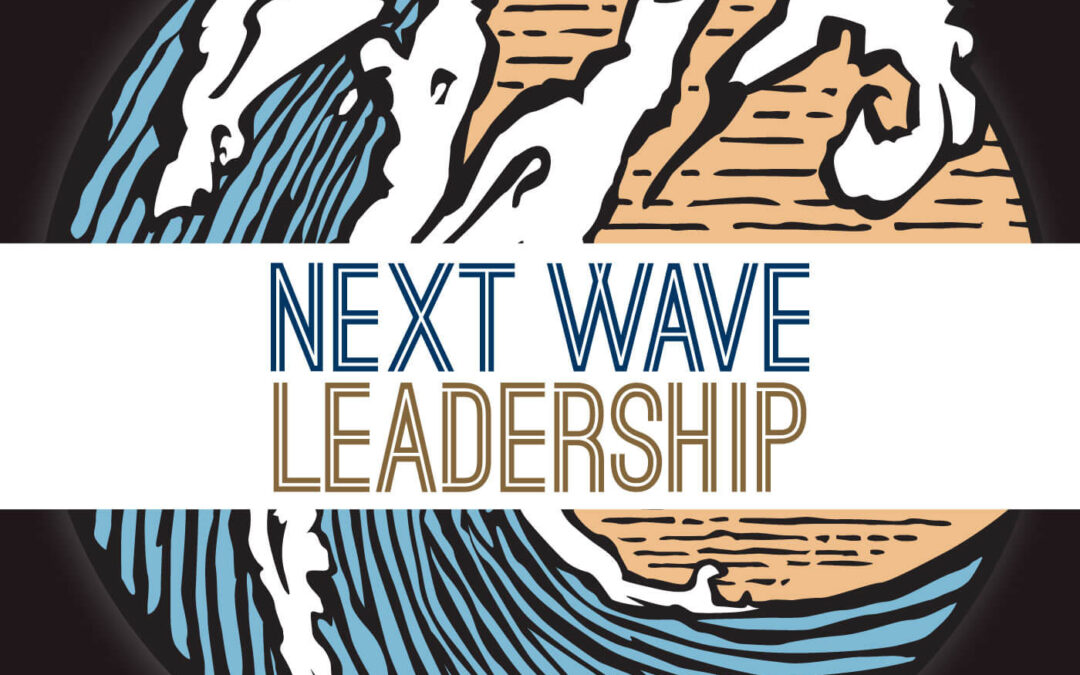


Everything You Need to Know About Innovation in 3 Sentences
Looking for help with Innovation?
Look no further than the:
- 1.93 billion Google results
- 773, 733 articles in scholarly journals
- Over 60,000 books on Amazon
There is no shortage of information, insights, advice, or research on innovation.
But who has time to read it?
You don’t. You’re too busy doing innovation to spend time reading about or studying it.
Of course, you do what you can – read an article, pick up a book, attend a webinar or conference, talk to a friend or colleague. But you always wonder if there’s something you’re missing. If the silver bullet that will finally make innovating in big companies easier is out there and you’ve missed it.
It’s not out there.
You haven’t missed it.
In fact, everything you need to know is summed up in these 3 sentences.
“If I had an hour to solve a problem, I’d spend 55 minutes thinking about the problem and 5 minutes thinking about solutions.” – Albert Einstein
Successful innovations solve meaningful problems. Yet most innovation teams rush right past the problem and right into creating solutions. And that’s a problem.
95% of innovations fail. The #1 cause of failure is poor product-market fit. The cause of poor product-market fit is a poor understanding of the problem and what the market deems to be a desirable, viable, and feasible solution.
Spend time thinking about the problem. Fall in love with the problem. Embrace the discomfort of not knowing and the mess of figuring it out. Once you understand the problem, home in on the root causes, can articulate the functional/emotional/social Jobs to be Done, and see the frictions that prevent solutions, then and only then should you start thinking about solutions.
“It ain’t what you don’t know that gets you into trouble, it’s what you know for sure that just ain’t so.” – Mark Twain
It seems that in business, it’s better to be confidently wrong than correctly uncertain. Saying “I don’t know” feels like the death knell of your career so it’s no wonder that people will do anything they can to avoid saying it. They’ll position an opinion as a fact, mischaracterize data, and even lie to avoid appearing uncertain.
False certainty is at the heart of so many failures, from unsuccessful products to global financial collapses.
Instead, be honest about what you don’t know and have a plan to learn. And if saying “I don’t know” feels too risky, try:
- I believe…
- I think…
- I would bet my annual/monthly/daily salary that….
Then take action – ask questions and listen to the answers, create prototypes, and run experiments. Do the work required to know.
“If you can’t explain it simply, you don’t understand it well enough.” – Albert Einstein
You poured your heart and soul into your innovation. Through (sometimes literally) blood, sweat, and tears, you created something new that creates value. And now you want everyone to know.
You want everyone to know the intricate details of how it works, to understand the agonizing trial and error you endured, to appreciate every detail of this amazing thing that you created.
No one cares. Everyone stopped listening after 30 seconds. Everyone cares about themselves and their problems. They want their problems to go away and if you have a solution that works, they’ll happily use it. They don’t need details, they need results.
You created something amazing, now tell people about it in the way they want to hear – simply, clearly, and quickly. If you can’t explain it simply, you don’t understand it well enough. Even worse, no one will listen long enough to know, understand, or want it.
What’s the 4th sentence?
Across those 1.93 billion Google results, 773, 733 scholarly journal articles, and 60,000+ books there are billions of more sentences. But very few of them are battle-tested, enduring, and true.
The three above fit that bill. What are others?

10 Qualities of Successful Innovation Leaders
We all want to be successful leaders, and if you’re reading this, you probably want to be a successful innovation leader.
But what does that mean?
What is a leader?
First, let’s clarify what makes a “leader” because we use it as a synonym for “manager,” they’re different.
In a nutshell, leaders have followers, people who choose to work with or for them. Managers have employees, people who must work with them. There are, of course, lots of other differences, and this list is a good starting point.
For this reason, leaders can (and do) exist at any level of the organization, whereas managers exist at higher levels as defined by the company’s org chart. So, while you can be a leader and not a manager, or both a leader and a manager, it’s important to remember that not all managers are leaders.
How can I be a successful leader?
As a designer friend of mine says, “it’s contextual.”
And while that’s true, as you get into the detail, I’d argue that a successful leader is someone who does the right thing in the right way.
Achieving that requires leaders to deliver required results and achieve those results ethically, legally, respectfully, and fairly. If you burn your people out, create or allow a toxic work environment, or engage in any number of harmful behaviors, you may be doing the right thing, but you’re definitely not doing it in the right way.
How can I be a successful innovation leader?
1. Action-oriented: You know that you need to take different actions if you want different results. You balance the need for thinking, exploration, and analysis with the need to create, experiment, engage in real-world learning.
2. Collaborative: You know that collaboration is more than simply showing up to the meeting. To you, collaboration is conversation, and the best conversations are the ones in which you talk less and listen more.
3. Committed: You’re in it for the long haul. You know that change happens slowly then fast and that billion-dollar businesses aren’t built in a quarter or even a year. You’re patient for growth and impatient for profit. You protect your teams from the impatient demands of others.
4. Engaged: You work with the team, talking to customers, building prototypes, and celebrating the wins and the learnings (which may be disguised as failures).
5. Honest: You are honest with yourself and your team. You earn your team’s trust because you don’t play guessing games, you’re transparent about how you make decisions, and you are consistent about how you make those decisions.
6. Intellectually Humble: You recognize and admit that the things you think you know may not be accurate. You are open to being wrong (yes, even publicly) because it’s part of learning.
7. Optimistic realist: You hope for the best and prepare for the worst. You know that things won’t always work out but that the odds of success increase when you do your best and inspire others to do theirs.
8. Tough: You know that “pioneers take the arrows, settlers take the land,” and you’re not afraid to take a few arrows. You know that people will question and doubt you and your team, but the promise of new or better is simply too irresistible.
9. Willing to take smart risks: You know that nothing is truly risk-free and that the further you venture from what’s known, the greater the risk. You also know that’s where the greatest rewards are, too. So you focus on managing and minimizing risks, getting just enough data to make the best next decision possible.
10. ?
#10 is for you
What is missing from this list? What characteristic(s) make you a successful leader of innovation?

Why Asking ‘Why?’ is Hard (And How to Make It Easier)
I love engineers*
Engineers are the ultimate problem-solvers. They see a problem and the need to fix it. Engineers believe every solution can be improved, every process can be more efficient, and every system optimized.
Which is why I nearly fell out of my chair when, after explaining (again) the importance of asking 5 Whys when interviewing customers and asking why the team was struggling to do so, an engineer said,
“We troubleshoot the why. Asking would be a show of not knowing.”
Wha?!?!?
In my head, I screamed, “But we don’t know! We don’t know the problem because the customer defines the problem! But people are terrible at defining problems, so we ask why. So that we can understand the root cause, then articulate the problem, then solve it!”
Instead of actually screaming, I took a deep breath and said, “Mmmmmm, interesting.”
Admittedly, not the most helpful response.
Why Asking “Why?” is hard
How often do you ask, “Why?”
How often do people on your team ask, “Why?”
Probably not often and probably for reasons that feel very sensible:
- It’s my job to know why
- I don’t want people to think I don’t know
- I don’t know, but I think I should
- People will think I’m stupid/not good at my job
- I’ll lose credibility, and that will impact my job/job prospects/paycheck
And, let’s be honest, those reasons are quite sensible depending on the circumstance.
But feelings aren’t facts, and I still didn’t understand why problem-solvers struggled to ask, “Why?”
So, I sought out an engineer and asked, “Why?”
He took a deep breath and said, “Mmmmmm, it’s complicated.”
When asking “Why?” should be hard.
There are lots of different types of engineers, but when you focus on engineers working in companies (as opposed to those in academia or research labs), most of them work on machines, code, systems, or processes, that exists or are knowable.
In this context, when there’s a problem, it’s the engineer’s job to identify why the problem occurred and how to fix it.
To troubleshoot the Why, engineers use tools specifically designed to collect and analyze data. While those tools aren’t perfect, engineers know how to calibrate the data by applying different allowances and tool combinations.
“So,” I summarized, “when you’re dealing with something objectively knowable, like a machine or code, and you have a proven tool for troubleshooting, you shouldn’t ask, ‘Why?’ Right?”
“Sure,” replied the engineer, who is very used to me over-simplifying things and knows better than to try to convince me that his long and complicated answer is a better way to go.
When asking “Why?” should be easy
Humans can also be thought of as machines, code, systems, and processes, but, unlike those that engineers work on, we’re not objectively knowable. As neuroscientist Antonio Damasio wrote, “We are not thinking machines. We are feeling machines that think.”
In this context, when a human has a problem, the human is the only one who knows why the problem occurred. This means that we must find the Why before we can troubleshoot it.
Finding the Why and troubleshooting in this circumstance is challenging because we don’t have tools specifically designed to collect and analyze data. We ARE the tools. We must ask the right questions and listen without assuming or interpreting to ensure that we get accurate answers.
How to make asking “Why?” easier
As a problem-solver, it’s always essential that you find the root cause.
How you find that root cause varies.
If the problem is occurring in something that is objectively knowable and accurately measured and assessed with proven tools, then yes, it IS your job to know why there’s a problem and troubleshoot it.
If the problem is occurring in something not objectively knowable (like a human), then it is your job to ask Why (usually several times) before you troubleshoot.
After all, even if you’re an engineer, you can’t solve a problem if you don’t know why it exists.
* I’m married to an engineer, but that’s not the only reason I love them

Transform Your Team’s Culture With This 1 Mindset Shift
“We want to build a culture of innovation.”
It’s a noble goal. After all, a culture that values and encourages innovation is an essential component of an innovative company – one that repeatedly and reliably uses innovation to grow revenue.
But you don’t need to build a culture of innovation. You already have one.
You need to unleash the aspects of your existing culture that fuel innovation.
It’s possible by making one shift in how you, and your colleague, think.
Stop (only) thinking like an employee
As an employee, you have a job to do. You have responsibilities and deliverables. There are processes your need to follow and TPS reports you need to complete. In return, you receive a regular paycheck and perhaps an annual bonus. If you’re successful, you get more responsibilities and deliverables resulting in bigger paychecks and bonuses.
Being an employee is not easy. Every day you deal with office politics, decisions you disagree with, emergencies you didn’t create, and well-intentioned but annoying colleagues. Every year or so you also deal with market uncertainty, re-orgs, layoffs, and maybe even merger or acquisition.
But through it all, you know that if you solve the problem that you’re given in a way that’s been proven and deliver the expected results in the expected timeframe, you’ll get the paycheck and the bonus, and maybe even the promotion.
The work you do is important. How you do it is important.
The world, the market, your company needs you to be a great employee.
But you don’t need to be only an employee.
Start thinking like an owner
As an owner, you have a job to do. You need trying to figure out what problem you’re solving and how to solve it profitably so that you can sustain and grow your business.
Being an owner is not easy. Every day you answer questions that you never anticipated, turn the unknown in to the known and acted upon, inspire other to invest in you, take a leap of faith while maintaining faith in yourself.
But through it all, you ask questions and never accept the first or obvious answer. You pour your time, energy, and passion into creating something you believe will make people’s lives better. You invest in your business, yourself, your employees, your suppliers, and all the other people working together to build something. And you remain confident that one day, you’ll reap the rewards.
Employees with an Owner’s mindset
At the heart of innovative companies and cultures are employees with an owner’s mindset.
They do their jobs and find ways to do their jobs better.
They follow prescribed processes and question the status quo.
They ask questions and work to find the answers.
They seek to understand decisions and engage to inform and influence them.
They deal with emergencies and take the time to investigate and address root causes
They cash their paychecks and work to build something better.
People who think and act like employees and owners (and know when each is required) deliver today’s results and create tomorrow’s business.
Your job as a leader is to help them strengthen their employee mindset and build their owner mindset so they can unleash your company’s culture of innovation.